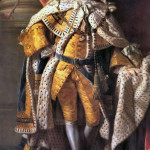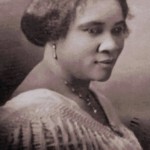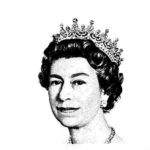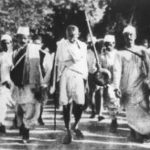The History Of The Suffragettes
The history of suffragettes dates to the mid-19th century. Some sources vary regarding when the suffrage movement began. Learn the history of the suffragists and their struggles, including the right of women to vote and run for public office.
Suffragettes In Great Britain
Women in Great Britain initially began writing letters about women’s suffrage to Parliament and committees within the British Government. It was not long before women began taking to the streets en masse, throwing rocks, damaging businesses and setting fire to post offices.
Time explains that while studying in Great Britain in 1907, a New Jersey Quaker woman named Alice Paul joined the suffragette movement in Great Britain before returning to the United States “radicalized,” in 1910. However, the suffragette movement in the U.S. was already underway before she returned to the U.S.
Early Suffragette Movement In The U.S.
In 1840, abolitionist Lucretia Mott and women’s rights activist Elizabeth Cady Stanton found themselves barred from attending the 1840 World Anti-Slavery Convention in London. Instead, the two women formed a Women’s Convention held in the U.S.
In July 1848, the Seneca Falls Convention drew more than 300 women and men to the first U.S. convention on women’s rights. The Library of Congress provides the scrapbook compiled by Stanton, documenting the two-day event. It was at this convention that Elizabeth Cady Stanton penned “The Declaration of Sentiments,” which details the agenda for supporters for future decades.
The Seneca Falls Convention resulted in tremendous support for causes of the suffragettes. The National Women’s History Museum (NWHM) points out that at the first National Women’s Rights Convention, held in Worcester, Massachusetts in 1850, noted abolitionists and women’s rights supporters such as Frederick Douglass, Lucy Stone, Sojourner Truth, and William Lloyd Garrison attended. The convention resulted in a great alliance with the abolitionist movement, continued at the convention the following year, with other influential people in attendance.
The year 1851 proved very powerful and influential. It was the year that former slave Sojourner Truth delivered her historical speech, “Ain’t I A Woman?” It was also the year that Elizabeth Cady Stanton and Susan B. Anthony first met, formed a friendship and lasting alliance.
Growing Pains And Battles
The suffragists experienced growing pains, resulting in break offs and new organizations forming. In 1863, Stanton and Anthony formed Woman’s National Loyal League to work on passage of the Thirteenth amendment and equal rights for blacks and women. Then in 1869, the two founded the National Woman Suffrage Association (NWSA), campaigning for a constitutional amendment for what History Net describes as “universal suffrage in America, and for other women’s rights.” Those rights included demands for changes in divorce laws and ending employment and pay discrimination.
Other suffragists, including Julia Ward Howe, formed the American Woman Suffrage Association (AWSA), focusing on women’s right to vote as well as “obtaining suffrage for black men with the Fourteenth and Fifteenth Amendments.”
The Fourteenth Amendment was ratified; however, it defined “Citizen” and “Voter” as males.
The two primary groups merged as the National American Women Suffrage Association (NAWSA), with Stanton as president and Anthony as vice-president.
Later Suffragist Efforts
In 1871, the Anti-Suffrage Party was founded with more aggressive action by suffragettes following. Susan B. Anthony managed to cast her ballot for Ulysses S. Grant and along with several other women, was promptly arrested. Over the next several years, suffragists continued their fight while the U.S. Government fought back, including the defeat of the Woman Suffrage Amendment.
At the turn of the century, women slowly began to take a more active role, leading to the issue of women’s suffrage once again appearing in several states. Slowly, states began adopting women’s suffrage, particularly after details of the poor treatment of arrested women emerged, eventually leading to passage and ratification of the Nineteenth Amendment, granting women the right to vote.






